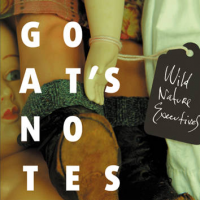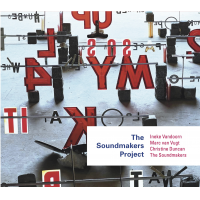Home » Jazz Articles » Rethinking Jazz Cultures » Tony Whyton: What Does Jazz Do For You?
Tony Whyton: What Does Jazz Do For You?
TW: There was a lot going on there, which I tried to highlight and it wasn't for one minute to credit or discredit Kenny G. It was more about why somebody like Pat Metheny should respond in such a way that they lose it. In jazz we revere these figures so much to the point that any kind of interpretation that's not an official one, where you've paid your dues or whatever, is treated with contempt or as a marker of disrespect. The idea was to challenge this and say, look, it's not like I'm walking into the Tate Gallery and defacing a painting by ripping it up or drawing on it. Recordings by their very nature are reproducible and can be reworked. The reaction was almost as if Kenny G had destroyed the Armstrong original when actually all it was doing was overdubbing some of Kenny G's music, which is what a lot of people do anyway.
What I was thinking was what is this buying into? I don't necessarily know, it's circumstantial but what makes an artist like Metheny react like this? Maybe it's the whole question of authenticity and what it means to be a jazz icon. Maybe there's an aspect of Metheny thinking he doesn't want to be identified with Kenny G as a white imposter. That's the shorthand of where I was coming from with it. There might be agreed and accepted forms of reverence and anybody who steps outside of that is seen as a transgressor. Metheny even described Kenny G's act as "necrophilia."
Other statistics showed not only Kenny G's market share but how there were perhaps surprises in terms of his following. Chris Washburne, who edited a book called Bad Music: The Music We Love To Hate (Routledge, 2004), got hold of audience figures in the States showing that Kenny G had a much larger following of African Americans than a lot of African American jazz artists. It challenges the idea that African Americans should listen to African American jazz. Or, oh, I'm an Englishman so I should only listen to English music, or whatever. It questions the idealized view of jazz as not only innately black music but that it's a music of and for black people, whereas in actual fact Kenny G's music is much more popular and maybe that doesn't sit very well with anyone really [laughs].
AAJ: You were in Paris in June for Global Circulations of Jazz conference, which was exploring similar themes to those explored in the Rethinking Jazz Cultures conference in Salford; what emerged from that conference?
TW: It was an interesting forum. We went and presented a panel on Rhythm Changes itself. I spoke about Scandinavia, ECM and the Nordic sound, George McKay was talking about Winifred Atwell, which is a fantastic story about gender and race in British jazz history and changing relationships to the popular. Walter van de Leur discussed Han Bennink and Dutch jazz, and Nick Gebhardt was talking about the legacy of the Jazz Warriors. On paper they seemed to be four very different aspects of European jazz, but throughout the panel, similar themes and threads emerged.
It was good for us to think about the flow of culture and how jazz feeds into identity and the relationship to America—everything from the Dutch rejection of American values to ECM creating a kind of European aesthetic, even when it's involving American artists, and so on. That was probably the most valuable thing for us, to get together as a panel and discuss this. The broad aims of the conference were really good, to think about jazz as a global music, even from its inception—the exchange routes and emergence of local scenes and sounds.
It goes back to the [Stuart] Nicholson thing of can you identify with national sounds? Are sounds rooted in a particular place? That, for me, is a really interesting question because obviously sounds are related to place and the works of a musician can become bound up with a particular nation or setting, but equally, they're not bound by that. I'd hate for someone to say to me, 'oh, you live in Manchester, I can hear the Manchester sound flowing through you,' when actually I'm exposed to musics from everywhere.
AAJ: Certainly jazz seems to have a much greater international profile than ever before?
TW: Yeah, I'm fascinated by the UNESCO International Jazz Day; on the one hand I'm thrilled. It's fantastic. It's the only music that is celebrated by the UN in this way, and it acknowledges the global presence of jazz. There's a jazz scene in almost every country in the world. On the other hand, I'm mortified when I see the way in which it's being promoted; it's almost a throwback to the 1950s and Eisenhower's ambassador program—jazz is presented as America's gift to the world, or through the lens of an American world view. Actually, if you wanted to use jazz as a means to understand cultural diversity and complexity, and even as a diplomatic tool, I think it would be much more interesting to think about the way jazz means different things to different people; the way it is not a universal language.
I interviewed a guy from a Syrian jazz festival a few years ago and he said that the reason he convinced the Syrian regime at the time to have a jazz festival was because they were convinced it was anti-American music [laughs]. But actually understanding that, and how jazz can bring people together even if they have radically different views, could inform American foreign policy much more than just promoting the same old stuff—America as this sort of land of opportunity or freedom.
AAJ: Just wrapping up here Tony, I'd like to quote a brief passage from the Jazz Icons... book: "Where scholars have attempted to expose the ideological nature of canonical discourses their insights remain firmly rooted on the margins of mainstream jazz culture." Do you feel that the tide is turning a little bit in this respect?
TW: I'd like to think so. One of the legacies of the project that I wanted to pursue was to talk more broadly with journalists, media and jazz writers and so on about this—the way jazz is written about and understood. It's not necessarily to stand on my pedestal and say you're doing this wrongly, you're representing the music in a limited way—it's more to enter into a dialogue. What are we doing here? I'm not convinced that we're there yet. I think that in a lot of the jazz press or writings about jazz we fall back on these comfort zones. It's a kind of shorthand where we can say a few things about the music and its past, but I think it would be really good to create some sort of forum where we could share ideas and talk more creatively and productively about the way the music is represented. Otherwise, and it's a point I keep coming back to, we're doing the complexity and value of the music a disservice by limiting its representations.
Some jazz journalists or writers might look at my book and say it's academic gobbledygook and too theory-driven. I'm sure there are people who think that scholars live in ivory towers and don't understand the music, but I think the Rhythm Changes conference indicated to me that these perceptions are changing, and that we are at a really important point of writing about the music where we can develop common projects and develop ways of working that benefit the music as well. One of the privileges of working on Rhythm Changes has been not only producing scholarly work and a series of books but getting the opportunity to work with musicians, festivals and venues.
If we can help bring people to the music and enhance their listening, for me, that would one of the triumphs of Rhythm Changes.
AAJ: Rhythm Changes was initially conceived as a three-year project but it sounds like there are good arguments for extending the project; is that a possibility?
TW: It's hard because the initial funding we received was for a fixed period of time. There will be a legacy to the project but it will probably find ias ts way into a number of different activities. Rhythm Changes has provided us with a platform to develop these ideas in different ways. I feel privileged to have been part of it.
Further reading as recommended by Tony Whyton
Steven Feld, Jazz Cosmopolitanism in Accra: Five Musical Years in Ghana (Duke University Press, 2012)John Gennari, Blowin' Hot and Cool: Jazz and its Critics (University of Chicago Press, 2006)
J Robert Walser, Keeping Time: Readings in Jazz History (Oxford University Press, 1999)
Tags
PREVIOUS / NEXT
Support All About Jazz
 All About Jazz has been a pillar of jazz since 1995, championing it as an art form and, more importantly, supporting the musicians who make it. Our enduring commitment has made "AAJ" one of the most culturally important websites of its kind, read by hundreds of thousands of fans, musicians and industry figures every month.
All About Jazz has been a pillar of jazz since 1995, championing it as an art form and, more importantly, supporting the musicians who make it. Our enduring commitment has made "AAJ" one of the most culturally important websites of its kind, read by hundreds of thousands of fans, musicians and industry figures every month.



























